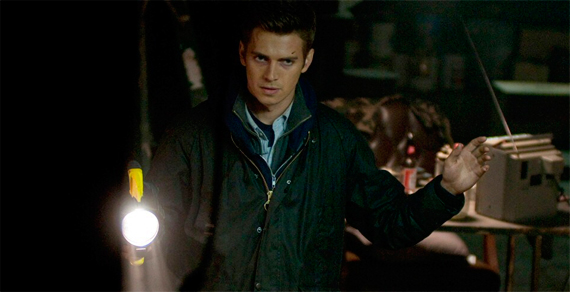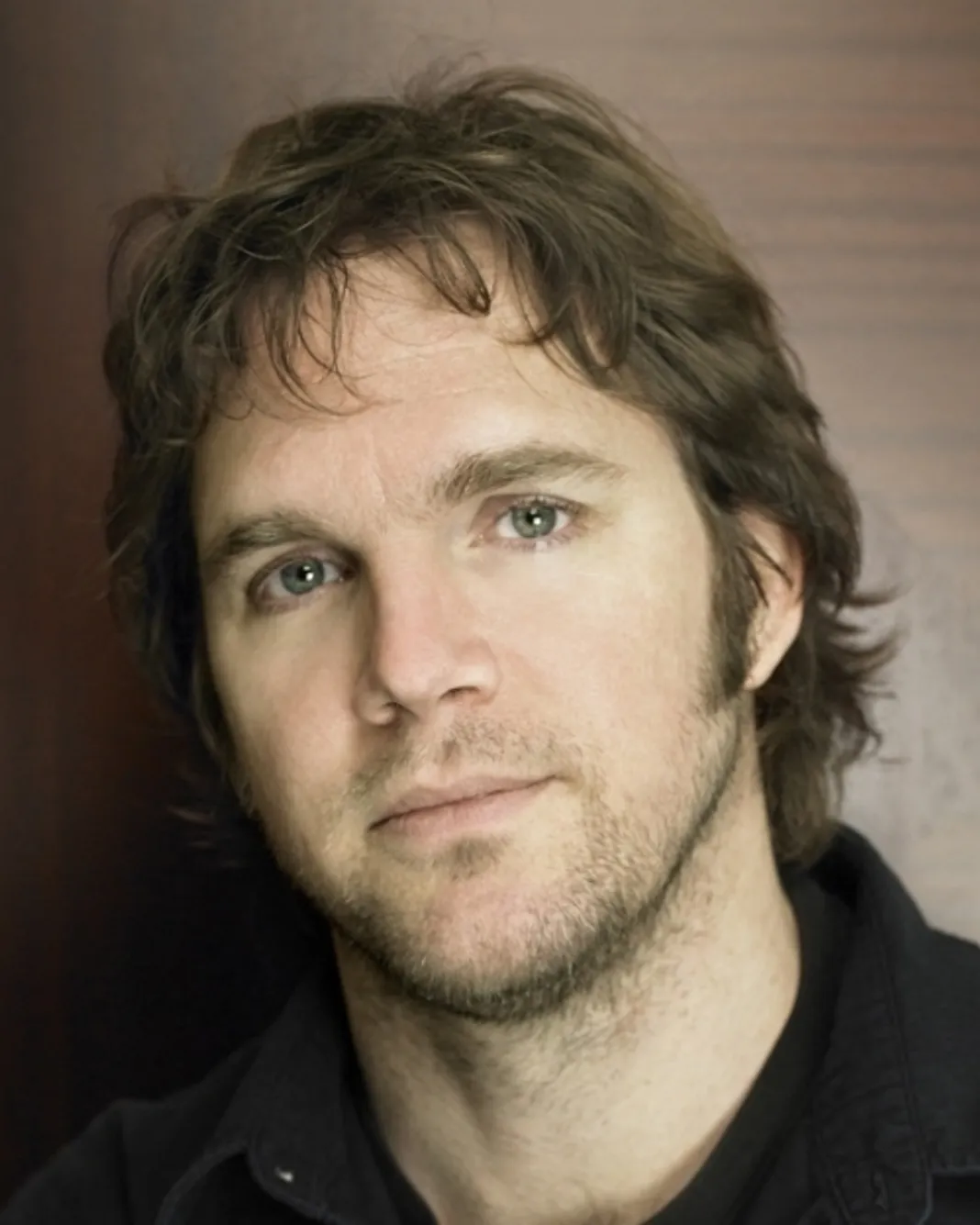 One of the most original “voices” in contemporary cinema is Brad Anderson, a filmmaker with visual flair and an affinity for unusual narratives. A DIY filmmaker who started his career making endearing little comedies like Next Stop Wonderland and Happy Accidents, Anderson started the second act of his career in 2001 with Session 9, a horrific mystery movie about an asbestos cleaning crew that experiences some terrifying activity while working in an abandoned mental hospital.
One of the most original “voices” in contemporary cinema is Brad Anderson, a filmmaker with visual flair and an affinity for unusual narratives. A DIY filmmaker who started his career making endearing little comedies like Next Stop Wonderland and Happy Accidents, Anderson started the second act of his career in 2001 with Session 9, a horrific mystery movie about an asbestos cleaning crew that experiences some terrifying activity while working in an abandoned mental hospital.
He received much acclaim with his 2004 neo-noir The Machinist, which starred Christan Bale just before he became Batman, and followed up with the murder-mystery Transsiberian. He’s back now with a new film called The Vanishing on 7th St. and it’s undoubtedly a Brad Anderson picture. I had the opportunity to talk with the filmmaker about the movie, his personal style and more. Read on for the complete interview!
In ‘Vanishing’, you took on a very challenging subject — at least in my eyes. You made a creature feature without a definitive creature, that’s how I took it. Is that how you approached the material? What were some of the challenges of making the film?
Yeah, you’re right. That’s what interested me in the script from the get go. That “monster,” if you will, wasn’t something that was lurking in the shadows, it was the shadows themselves. It was darkness. And the challenge of trying to dramatize that, or animate the darkness, the technical things that were involved was what interested me in the script and the project. In fact, it had the trappings of the genre — a sort of apocalyptic thriller — but there were also a lot of ideas planted within the story and characters who were struggling with mortality and levels that interested me. I think the biggest challenge though was certainly, on a story level, how much ambiguity and lack of resolution could we get away with in the story. The second one was how to technically create the shadow effects and the darkness in a way that it felt endearing.
…And without being campy.
Right, so we did a lot of experiments with the digital effects to try and choose that.
One of the levels of the story I found interesting, but wasn’t resolved for obvious reasons, was the significance the historical events of Roanoke in the narrative. That’s one of those historical mysteries that you hear about in school classes and read about in scholarly essays, but it’s interesting that we still don’t know what happened. So what was the significance to tying them into the story, outside of the obvious? Why put that in there?
The script just kind of ended and never had any definitive explanation and even the original ideea was that there was no real chance to lay out possible scenarios as to what might be happening. We decided to add this possibility to the various explanations, all of them being equally valid. Each of the characters kind of came to their reasons as to why things might happen. We put in a bit for John’s explanation, maybe that was some type of reversal of a main event that’s happening now. As another bizarre possible explanation, each one of these guys is struggling to make sense out of a seemingly senseless event. And like anyone, he’s just riffing on possible connections and tries to find a reasonable explanation, even though there’s never an explanation, really. Plus, when you toss all these Easter eggs into the mix, people can either choose to grab them or let them go or use them as evidence for a possible explanation. Obviously, we didn’t provide a definitive resolution. For me, it keeps the mystery alive and makes a movie that much more unsettling if you don’t know why this is happening, but you could see in the headspace of these characters who are equally perplexed.
Was it easy for the cast to adapt to this unusual scenario and format or did you have to really walk them through their character arcs in the story? Because as you said, there’s a lot of ambiguity in the story and I’m wondering how much guidance they needed to get into the zone.
Yeah, mainly it was giving them help and finding ways to react to things that weren’t there, because we added things digitally. But honestly, these guys are all well versed in acting against the blue screen and CGI stuff. It wasn’t that I needed to explain a lot about the story because it never really builds to anything. We just had very specific rules, like stay in the light, and the other being time’s running out, what are you going to do. Sort of between the operative, sort of dramatic bones of the story. That was pretty easy for them to understand. Regarding each character coming up with stories about what was happening, yeah, they had a lot of questions about that — the actors. I did my best to explain, but I don’t have those answers either. The whole idea that there isn’t really one, it’s beyond our understanding. For that reason, it’s the kind of movie that would appeal these type of people, who like these mysteries, but probably won’t appeal to people who want everything tied up neatly in the end and want a simple, logical explanation. The whole movie is a metaphor for death in the sense that our own individual stories, our lives, they end inexplicably and they often don’t have a nice resolution to them. We don’t know what lies beyond that moment. And that’s like this movie itself. We wanted that abruptness and that inexplicableness of it to be kind of reflected in the stories it sells. Hence we did away with any easy explanations.
 Which is cool. You mentioned the visual style, and that’s something i’ve found in your films that I enjoy. How do you come up with the visual style that guides the stories you tell?
Which is cool. You mentioned the visual style, and that’s something i’ve found in your films that I enjoy. How do you come up with the visual style that guides the stories you tell?
You know, every movie I think has its own style, like my last film, Transsiberian. It was all hand held. We were going through something that felt more documentary like, a little bit raw, you know. This one, we were going for a more straightforward, classic style. We didn’t want the style of the movie to overwhelm the story in a way but in terms of the tones and colors or lack of colors, we shot this movie on the red camera. Which was, a mistake. Not a very night friendly camera, at least the one we were using. We were doing a lot of night shoots and I had to put in so much light to simply get an exposure because it was so dark. That camera actually drove the look of the movie because in parts we had to dial everything down and make everything look so dark, we applied this bleak, bypass look to take out some of the colors and wash it out a bit, make it more of a contrast between light and dark. The idea was to not have bright, vivid color to distract from the simple contrast between the light and the dark within the shot. That’s why we took a lot of color out of the movie. And then we added a bit of a glow to everything, a digital effect we applied to the whole movie that gives the light areas and the highlights a very subtle kind of glow that I felt enhanced the properties of light. Then of course the dark shadows were all digitally added, trying to create a way to really sell the idea that the shadows and the darkness emerge organically out of real shadows. So when we shot the scenes, we would try to light them so we’d have areas we could build shadows on later. We thought it out, but a lot of films’ looks are discovered later on these days, particularly if you shoot digitally. You figure it out in post, really.
Is there anything you can tell me about forthcoming projects? What are you working on now? Jack? The Genesis Code?
They’re all in various states of trying to get to the starting line. Jack is one I’m thinking that might come together soon hopefully. So, yeah. Those are two projects I’m trying to get going, it’s just complicated to get funding. Hopefully something comes together soon.
(This interview was conducted before the news of Anderson’s new collaboration with Christian Bale on Concrete Island was revealed).
The Vanishing On 7th Street hits theaters on February 18th, but you can catch it now on select VOD services


